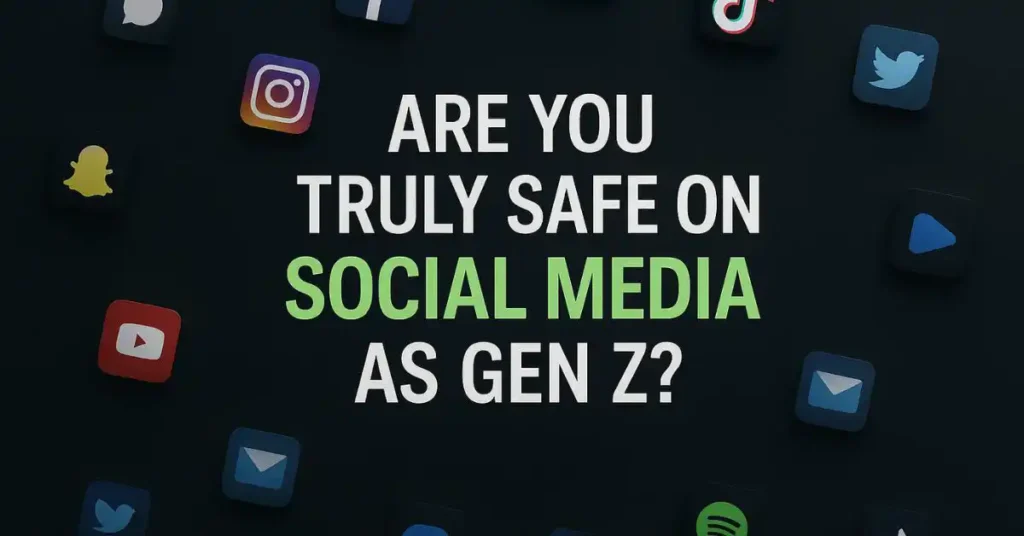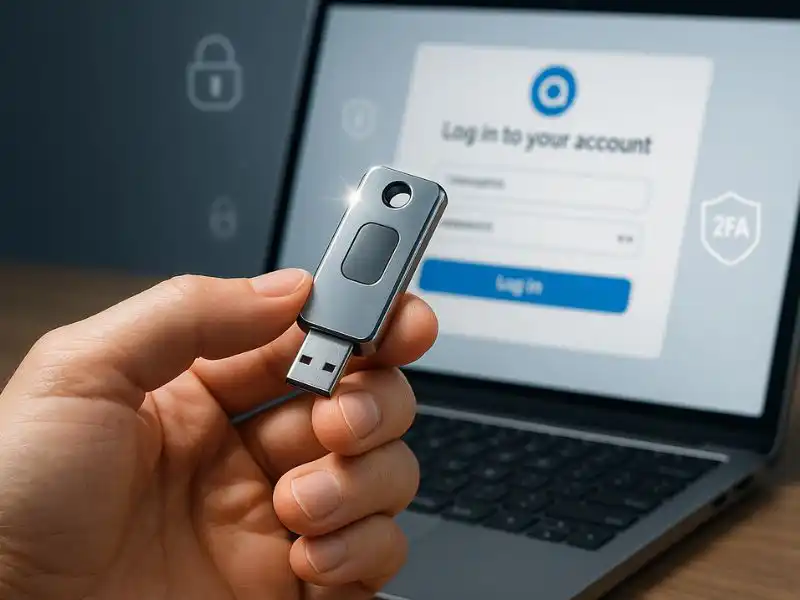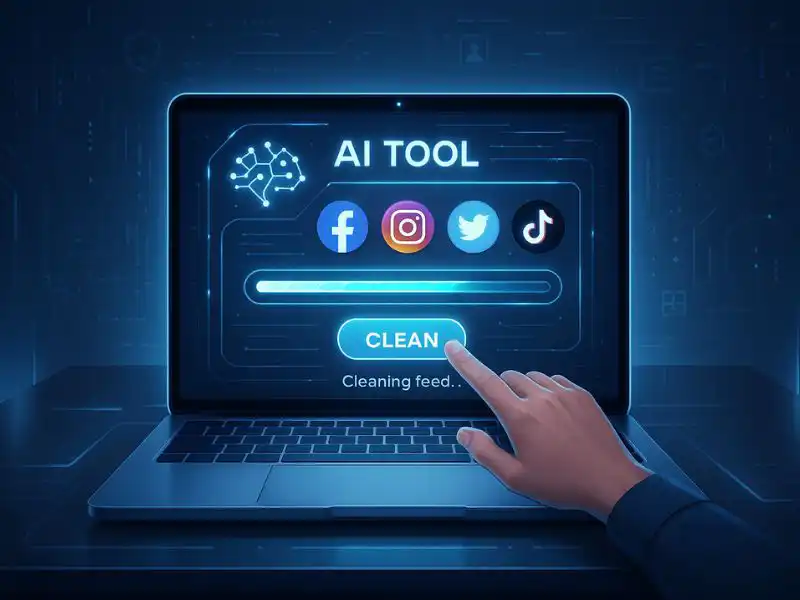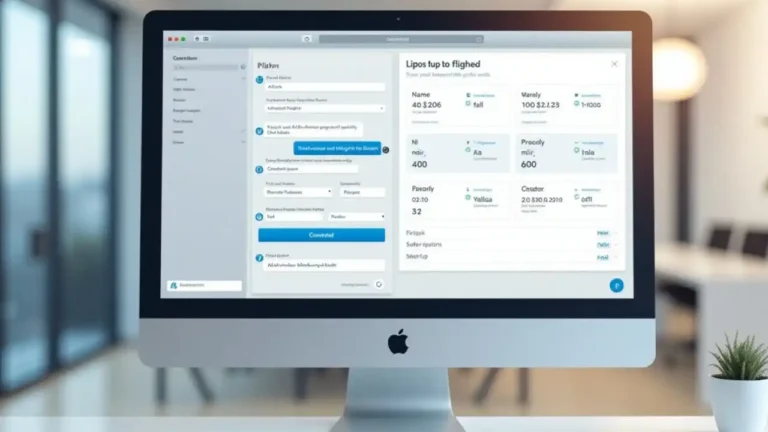How to Stay Safe on Social Media as Gen Z in 2025: Protect Your Digital Identity
Stay Safe on Social Media as Gen Z
Our communication, self-expression, and even business activities have been overtaken by social media. However, Gen Z finds that the digital world has a lot of hidden dangers. From privacy violations to mental health risks to the spread of misleading information, it’s easy to get overwhelmed by the potential threat that hides behind every screen. Still, it does not have to be hard and scary to stay safe on social media as Gen Z. If you have the right facts, a plan, and a proactive mindset, you can still stay safe on social media in ways that others would not consider.

Let’s examine the real, practical strategies—unique, expert-level insights—that aren’t found in the typical blog post. These solutions will not only help you to stay safe, but they will also enable you to take advantage of social media without continuously worrying about your privacy or reputation being compromised.
Table of Contents
A New Era of Digital Dangers for Gen Z
We’ve demonstrated how important social media is to Gen Z’s everyday existence. But unlike previous generations, your internet identity is now a part of your whole identity, both public and private. Many critics claim that Gen Z’s digital identity is increasingly defined by likes, shares, and followers, and that their online presence sometimes overshadows their traditional in-person experiences.
However, this hyperconnected society presents a variety of issues beyond typical privacy worries and cyberbullying. Not just malicious individuals are at risk, but the system itself—the platform algorithms, your own digital habits, and the consequences of living in a hyper-quantified society.
Digital Identity Crisis
Your online persona is influenced by both your shared and private information. The algorithms measure your clicks, how long you spend on a single post, and even your “mood” based on interaction patterns. The more connected you are, the more unknowingly you are being shaped. Social media companies utilize this data to tailor advertisements to change what you see
Real-World Example:
The International Journal of Research and Innovation in Social Science published a study that examined the influence of TikTok trends on Gen Z’s shopping habits. It was shown that factors like the authenticity and trustworthiness of the information significantly impact their purchasing decisions.
Social Media as a Weapon:
The technologies of social media platforms are increasingly being utilized as weapons. Whether it’s an AI bot influencing a political debate or an app that follows your every move for profit, the line between personal and corporate or political use is becoming increasingly hazy. Protecting your account password and avoiding nasty remarks are not as crucial as redefining your relationship with these platforms in ways that others aren’t even considering yet. So, it’s high time to take every possible measure to stay safe on social media as Gen Z, because you are the ones mostly at risk.
Data Point:
According to a Pew Research Center survey, 60% of Gen Z respondents say that concerns about data collection and misuse have made them far less trusting in social media companies in recent years.
Why Most Solutions Miss the Mark
You’ve probably heard the same advice over and over again: cut back on your screen time or use two-factor authentication. Although these solutions are beneficial, they don’t deal with the underlying issues. You can’t “fix” these little irritations with a few program adjustments. Staying safe on social media is not just about these basic precautionary measures that could be find anywhere easily.
Data Profiling and Behavioral Manipulation
Nowadays, gathering data is a means of controlling your behavior rather than just a security concern. If you’re not taking aggressive measures to safeguard your digital identity, every click you make is being sold. Data privacy not only prevents hackers from accessing your information, but it also prevents your preferences from being inadvertently disclosed or from being pushed, controlled, or influenced. Social media firms are continuously altering your behavior without your consent in order to increase interaction.
Real-World Example: As demonstrated by a Cambridge Analytica study that exposed how Facebook’s data collection and algorithm manipulation were used to target voters, the power of data profiling transcends social media platforms.
Data Insight:
According to a study published in JAMA Psychiatry, excessive use of social media is linked to feelings of anxiety and depression, particularly in young adults. Like gambling or video game addiction, the constant chase of likes and shares can lead to compulsive behavior. Approaches to Stay Safe on Social Media as Gen Z
How to Stay Safe on Social Media as Gen Z – Go Beyond the Basics
Now, let’s focus on feasible, innovative solutions that go beyond the conventional advice for staying safe on social media and incorporate deeper, more realistic strategies that will actually protect your digital identity in ways that no one else is talking about.
1. Check for Data Leaks and Use Dark Web Monitoring
Even though you might not be aware of it, your information might have been part of a data breach or made public on the dark web. Certain tools and services can alert you if your data has been compromised.
How to do it: Register for services like Have I Been Pwned to discover whether your email address or other private data has been compromised.
Consider using Dark Web Monitoring services like Dashlane or 1Password to get notified if your login credentials are found on the dark web.
2. Use OS-Level App Sandboxing for Social Media Apps
Since sandbox apps are isolated from the rest of your system, hackers find it more difficult to exploit app vulnerabilities and gain access to your device or social media accounts.
Solution:
- On Android: You may separate and create work accounts for your social media apps on Android by activating App Sandbox using apps like Island or Shelter.
- On macOS, you can use the sandboxing tools included in System Preferences > Security & Privacy > Privacy to limit program access to sensitive system resources.
- Linux users can use AppArmor or SELinux to create restricted app environments for apps like social media sites or browsers.
This makes it more difficult for hackers to access your accounts or steal private data using the apps on your device.

3. Use a Physical Security Key (Not Just 2FA)
Even though many people are already familiar with two-factor authentication (2FA) through SMS or apps like Google Authenticator, physical security keys are still one of the most secure ways to protect your accounts. They are practically unbreakable and offer hardware-level protection.
How to do it:
- Purchase a secure key, such as YubiKey or Google Titan. These devices are Bluetooth-enabled or tiny USB sticks that link to your computer or mobile device to authorize logins.
- Instead of using SMS or app-based 2FA, choose Security Key under Account Settings > Security > Two-Factor Authentication to set it up in your social media accounts.
- It will be very difficult for someone to access your account without the device after it is set up because you will need the device itself to authorize the login each time.

4. AI-Powered Digital Hygiene: Clean Your Algorithm
What if your data could be cleansed, like a digital detox for your mind? These days, social media corporations keep track of your activities and tailor your feed to display content that you have already engaged with. The more you engage with them, the more they learn, and this often results in a deeper development of your online habits and preferences. This could make it harder for you to view a variety of content and trap you in negative feedback loops, making it even harder to stay safe on social media.
Innovative Solution: Use AI-powered tools like ClearScope or MyData to take control of your digital hygiene. These tools assist you in understanding your digital footprint by mapping the data that your algorithms are suggesting to you. They allow you to modify the way your social media experience is customized or to delete content from your feed that is irrelevant or potentially harmful. Thus, it helps you protect your digital identity.
Practical Tip: Check your “digital hygiene” once a month. Review the items you have liked or interacted with during the last 30 days to tidy up your feed. Modify your recommendations, disable any apps that aren’t in use, and update your profile’s privacy settings.

5. Block Web Tracking and Fingerprinting
Every time you visit a social media website, monitoring scripts gather your IP address, location, and even your browsing habits. This information is used to build a profile of you that may be exploited against you by marketers or hackers.
How to do it:
Install privacy-focused browser plugins like Privacy Badger or uBlock Origin. These technologies automatically prevent third-party websites’ trackers and cookies when they try to collect information about you while you surf.
6. Create a Disposable, One-Time Use Phone Number for Social Media
By number porting or SIM switching, hackers may bypass a number of phone number-based security mechanisms (such as SMS-based 2FA). You can avoid this by using burner phone numbers that are unrelated to your real identity.
Solution:
- For example, use a short-term, disposable phone number from Hushed, Google Voice, or Burner.
- Use these temporary numbers for your social media accounts rather than your own phone number.
- Avoid posting your real phone number on any social media platform where it is visible to others.
These companies give you temporary, anonymous numbers that you can throw away whenever you want. This prevents hackers from obtaining your number and bypassing 2FA by utilizing SIM swaps.
7. Lock Down Your Device with Full Disk Encryption and Anti-Tamper Technology
A hacker can easily gain access to your social media accounts if they are able to physically access your device. Complete disk encryption ensures that the intruder cannot access the data on your hard drive or recover passwords from it, even if your laptop or phone is stolen. It is also more difficult for hackers to physically manipulate your equipment when anti-tamper technology is enabled.
Activate full disk encryption:
- Windows: BitLocker can be used to encrypt the entire disk.
- MacOS: Use FileVault to enable disk encryption.
- Android: Use the built-in encryption feature by going to Settings > Security > Encrypt Phone.
- iPhone: Full disk encryption is enabled by default on iPhones running iOS 8 or later.
- Use Anti-Tamper Protection: Some systems have BIOS password protection and secure boot features that prohibit the machine from starting up without the necessary login information. Turn on these features if your device has them.
Hackers cannot access critical data even if they physically take your device because encrypted data requires the correct password or key to be decoded.
8. Monitor Your Devices with a “Rootkit” Detector
Hackers might try to install rootkits or keyloggers on your device to monitor your activity and steal your credentials. You can monitor your devices for these with sophisticated malware scanners and rootkit detectors.
Solution:
- Download Root Checker for Android from the Play Store and run it to check if your device has been rooted.
- Make use of a rootkit detection tool like GMER (for Windows) or Chkrootkit (for Linux).
- Regularly check your computer and phone for malware and unauthorized access.
- Update your device’s anti-malware software frequently and keep system updates enabled to address vulnerabilities.
This helps detect any potential spying devices that attackers might have installed and keeps your PC clear of malicious software that could steal your login informatio
Conclusion:
You need more than just the usual advice to secure social media accounts if you’re a tech-savvy Gen Zer. You need innovative, flexible solutions that give you artistic control over how you seem online and safeguard your data. By implementing these hidden features, cutting-edge technologies, and advanced privacy tactics, you can remain ahead of the game and ensure that your social media is a safe and effective place.
These solutions go beyond the basics and provide you real control over your online life.
How to check information on the dark web to stay safe on social media as Gen Z?
To stay safe on social media, Gen Z users need to monitor their personal data for possible breaches. Dark web monitoring programs like Dashlane and Have I Been Pwned can alert you if your information has been compromised in order to stop misuse.
In what ways can OS-level app sandboxing assist Gen Z in maintaining their didgital identity?
By separating social media apps from other system processes, OS-level app sandboxing makes it more difficult for hackers to take advantage of security flaws. Gen Z may protect their devices and accounts to stay safe on social media by using apps like Island for Android or the built-in sandboxing on macOS.
Why should we use physical security keys instead of SMS-based 2FA to stay safe on social media as Gen Z?
With the unmatched safety of physical security keys like YubiKey, Gen Z can stay safe on social media. Unlike SMS-based two-factor authentication, physical keys ensure that accounts remain safe even if a phone is compromised, making it more difficult for hackers to access social media accounts.
How can Gen Z use AI-powered tools to erase their digital identity and stay safe on social media?
AI-powered solutions like ClearScope or MyData can help stay safe on social media as Gen Z by eliminating digital traces. These tools help regulate how social media platforms tailor content, giving consumers control over what they see and removing objectionable or superfluous content for a safer online experience.
What are the benefits of shielding Gen Z from internet tracking and fingerprinting so they stay safe on social media?
By blocking browser trackers and fingerprinting with apps like Privacy Badger or uBlock Origin, you can stay safe on social media as Gen Z. These solutions prevent third-party advertisers from collecting personal browsing data, reduce the likelihood of unwanted targeting, and protect digital identity on social media interactions.
How can members of Generation Z use disposable phone numbers to stay safe on social media?
Gen Z may use disposable phone numbers like Burner or Google Voice to stay safe on social media. These temporary numbers can be used for two-factor authentication (2FA) on social media platforms, preventing SIM swaps and safeguarding accounts against hacking attempts.
How can members of Gen Z maintain their social media security? How important is whole disk encryption?
To stay safe on social media as Gen Z, full disk encryption is necessary. In the event that devices are misplaced or stolen, encryption ensures the security of private data, including social media accounts and personal information. Enabling BitLocker (Windows) or FileVault (Mac) protects sensitive information against unauthorized access.
How to stay safe on social media as Gen Z with the help of rootkit scanners?
Rootkit detectors like GMER (Windows) or Chkrootkit (Linux) may assist Gen Z stay safe on social media by identifying malicious software, such as keyloggers or spyware, that may be monitoring social media activities. Regular scanning ensures that devices remain secure and that unauthorized parties cannot access personal data.
Why is it crucial for Gen Zers to regularly review and adjust their social media privacy settings for their own safety?
Regularly reviewing and adjusting their privacy settings on social media is one proactive way that Gen Z can stay safe. By limiting who can see postings and what may be posted, Gen Z can protect their personal data and ensure that their social media interactions are secure and private.
How can Gen Z monitor app permissions to stay safe on social media?
Monitoring app permissions keeps Generation Z stay safe on social media by preventing social media apps from accessing unnecessary personal information. Limiting an application’s permissions, such as contacts or location, ensures that only necessary information is provided, lowering the risk of data misuse and privacy violations.







